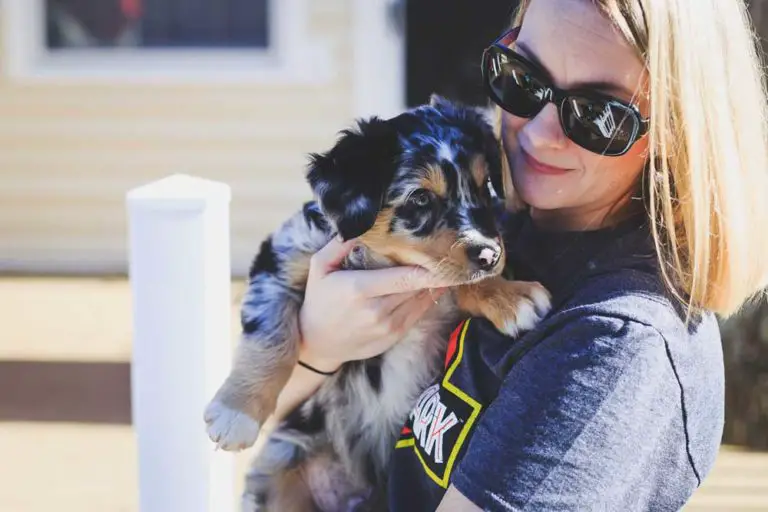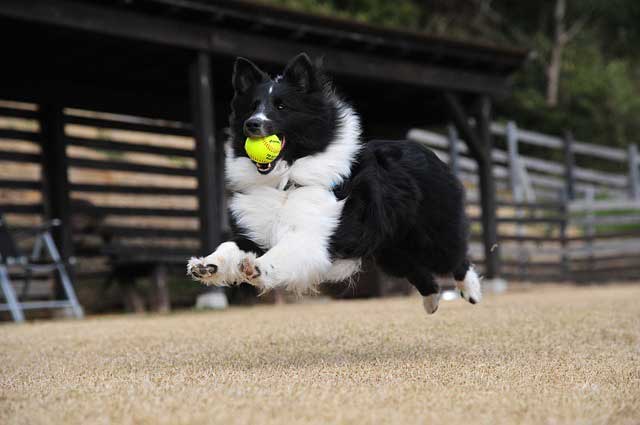20 Helpful Tips For Caring For A Blind Dog
If you are the owner of a blind dog, you may be wondering what you can do to ensure that your furry friend has a happy and healthy life. Caring for a blind dog may seem challenging at first, but with a few adjustments, you can create a safe and comfortable environment for your furry companion. In this article, we will explore 20 helpful tips for caring for a blind dog.
Blindness in Dogs
Blindness in dogs can occur for a variety of reasons, including genetic conditions, disease, or injury. Some of the signs that your dog may be experiencing vision loss include bumping into objects, difficulty navigating familiar spaces, and increased reliance on their other senses.
If you suspect that your dog may be losing their vision, it is essential to take them to a veterinarian for a check-up. Your vet can help you determine the cause of your dog’s vision loss and provide you with guidance on how to care for your blind dog.

20 Tips for Caring for a Blind Dog
- Create a Safe Environment: Remove any potential hazards that your blind dog may stumble upon, such as sharp objects or furniture with sharp corners. Block off areas that are too dangerous for your dog to navigate safely.
- Use Verbal Cues: Dogs rely heavily on their sense of hearing, so use verbal cues to help your blind dog navigate their environment. Use a consistent tone of voice to help them recognize different commands.
- Introduce New Scents: Dogs also rely on their sense of smell, so introducing new scents can help your dog become more comfortable in their surroundings. For example, using essential oils or diffusers can help your dog navigate a room.
- Provide Plenty of Exercise: Blind dogs still need exercise, so make sure to provide them with plenty of opportunities to move around. Take them for walks or play games with them in a safe and enclosed space.
- Use a Harness or Leash: A harness or leash can help your blind dog feel more secure when walking outside. It can also help prevent them from wandering too far from you.
- Use Touch Cues: Touch cues, such as a gentle touch on the shoulder, can help your blind dog understand your commands and navigate their environment.
- Use a Raised Feeding Station: A raised feeding station can make it easier for your blind dog to find their food and water bowls.
- Keep Furniture in the Same Place: Blind dogs rely on memorizing the layout of a room, so keeping furniture in the same place can help them navigate the space more easily.
- Use a Sound-Making Toy: Sound-making toys, such as toys that make noise when your dog plays with them, can help your blind dog locate the toy and provide them with mental stimulation.
- Use a Scented Collar: A scented collar can help your dog find their way back to you if they get lost.
- Avoid Moving Furniture: Moving furniture can be disorienting for a blind dog. Try to keep furniture in the same place to help your dog navigate their environment.
- Use a Dog Bed with Raised Edges: A dog bed with raised edges can help your blind dog feel more secure and prevent them from falling off the bed.
- Be Patient: Caring for a blind dog can be challenging, but it is essential to be patient with them. Give them time to adjust to their new environment and be patient as they learn new commands and navigate their surroundings.
- Use a Familiar Smell: Using a familiar scent, such as your perfume or cologne, can help your blind dog recognize you and feel more comfortable around you
- Keep Doors Closed: Keep doors closed to prevent your blind dog from accidentally wandering into a room that may not be safe for them.
- Use Treats for Positive Reinforcement: Use treats to reward your blind dog for good behavior. Positive reinforcement can help them learn new commands and behaviors more quickly.
- Use Texture Markers: Placing texture markers, such as a rug or mat, can help your blind dog navigate their environment more easily.
- Keep Them on a Consistent Schedule: Blind dogs thrive on consistency, so try to keep them on a consistent schedule for feeding, exercise, and playtime.
- Provide Plenty of Mental Stimulation: Blind dogs can still enjoy mental stimulation, so provide them with toys and puzzles that engage their sense of smell and hearing.
- Consider Training: Consider working with a professional dog trainer who has experience working with blind dogs. They can provide you with additional tips and guidance on how to care for your furry friend.
Key Takeaway
Caring for a blind dog requires a few adjustments, but with a little patience and some creativity, you can provide your furry companion with a happy and healthy life. Creating a safe environment, using verbal and touch cues, and providing plenty of exercises and mental stimulation are just a few of the ways you can care for a blind dog. By following these 20 helpful tips, you can ensure that your furry friend feels loved, comfortable, and secure in their environment.
Tools for Caring for a Blind Dog
| Tool | Description |
|---|---|
| Dog harness | Helps your blind dog feel secure when walking |
| Raised feeding station | Makes it easier for your blind dog to find their food and water bowls |
| Scented collar | Helps your dog find their way back to you if they get lost |
| Sound-making toys | Provides mental stimulation and helps your blind dog locate the toy |
| Texture markers | Helps your blind dog navigate their environment more easily |

FAQs: Caring for a Blind Dog
Q: How can I tell if my dog is going blind?
A: Some signs that your dog may be experiencing vision loss include bumping into objects, difficulty navigating familiar spaces, and increased reliance on their other senses. If you suspect that your dog may be losing their vision, it is essential to take them to a veterinarian for a check-up.
Q: Should I use a leash or harness for my blind dog?
A: Using a harness or leash can help your blind dog feel more secure when walking outside. It can also help prevent them from wandering too far from you. However, it’s essential to ensure that the leash or harness is properly fitted and comfortable for your dog.
Q: How can I create a safe environment for my blind dog?
A: To create a safe environment for your blind dog, remove any potential hazards that your blind dog may stumble upon, such as sharp objects or furniture with sharp corners. Block off areas that are too dangerous for your dog to navigate safely. You can also use texture markers, such as a rug or mat, to help your blind dog navigate their environment more easily.
Q: How can I provide mental stimulation for my blind dog?
A: Blind dogs can still enjoy mental stimulation, so provide them with toys and puzzles that engage their sense of smell and hearing. Sound-making toys and puzzle toys with treats hidden inside are great options.
Q: Should I consider training for my blind dog?
A: Yes, working with a professional dog trainer who has experience working with blind dogs can provide you with additional tips and guidance on how to care for your furry friend. They can help you teach your blind dog new commands and behaviors and provide you with valuable support and resources.







